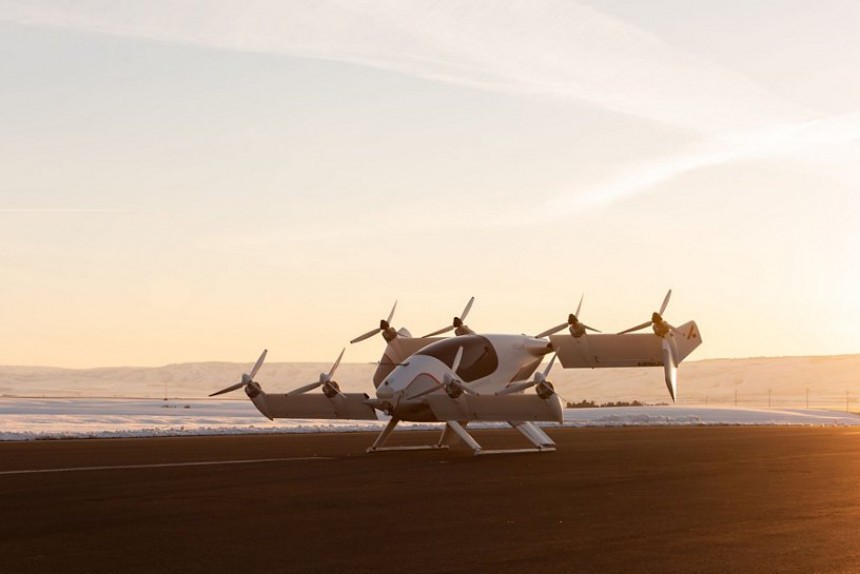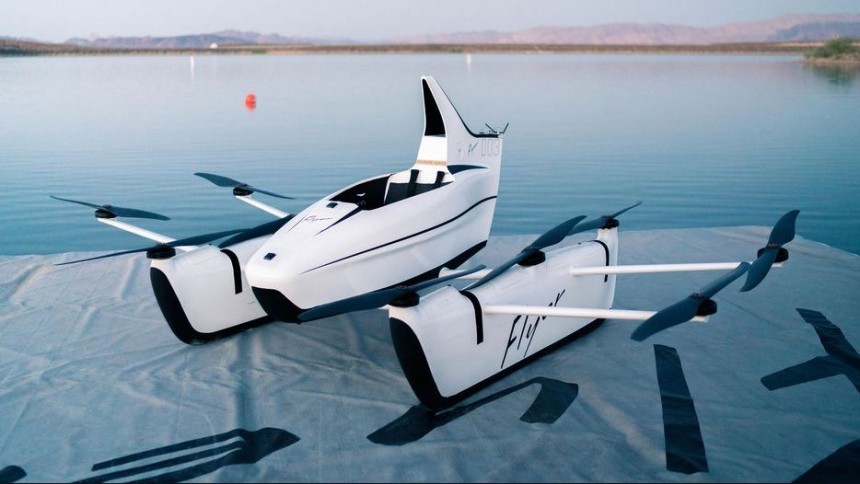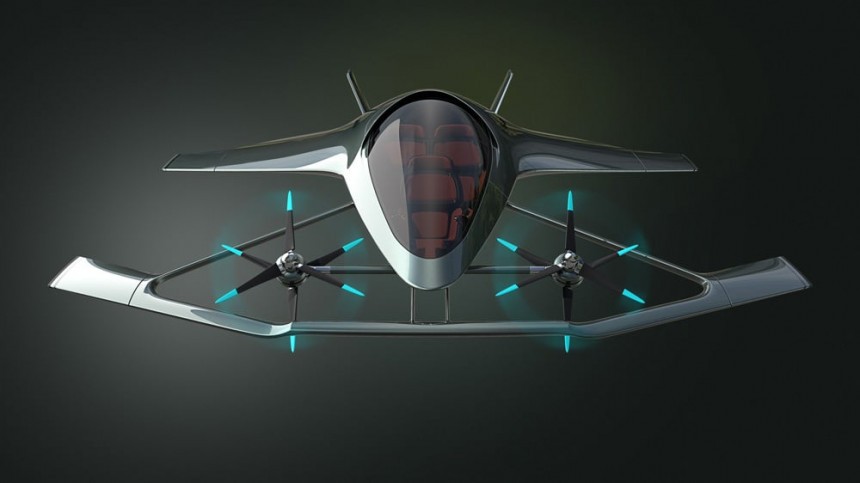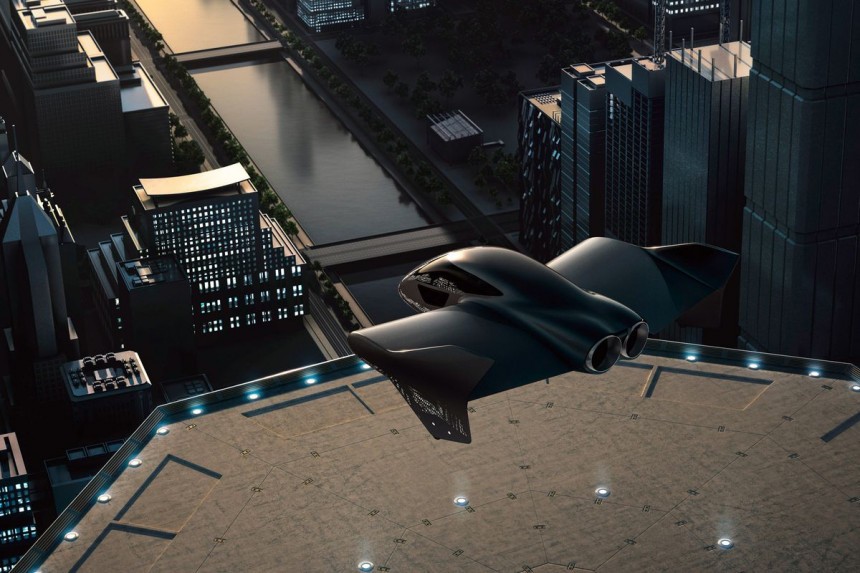So imagine the following scenario: you look up towards the sky one morning and you see flying cars with spinning blades rushing at the height of a 10-story building while trying to overtake each other in order to save some time on their daily commute.
It sounds like an excerpt from a science fiction movie, the likes of Star Wars, The Fifth Element or even Blade Runner coming to mind. But don’t let yourself get fooled, as flying cars are happening, and they might come sooner than most think.
Lately, investments in the creation of air taxis are being measured in the hundreds of millions of dollars, as there are more and more real, achievable and sustainable designs that could save us from the misery of traffic jams as we know them today.
Today, a lot of VTOL (vertical take-off and landing) projects are underway, and whether the big breakthrough will be made by big names in aeronautics like Airbus or Boeing, or the “newer kids from the block”, remains to be seen. Until we know, we’ve chosen five designs that peaked our interest:
The first tests were conducted back in January 2018 in Oregon, where an unmanned aerial vehicle (UAV) took off at about 16 feet (5 meters) and stayed in the air for almost a minute, after which it made a successful landing. Since then, over 100 more tests have been conducted, eventually reaching the milestone of its first long flight.
"Alpha One", as its nicknamed, has flown for several minutes in the airspace of the Pendleton airport, and thoroughly tested its ability to switch from vertical takeoff to horizontal flight by flipping its eight small electric rotors.
Most likely, when it reaches production, the aircraft will be a single-seater with the option to also be controlled from the ground, thanks to the autopilot system and a special computer program.
Totally electric, the single-seater looks like a Formula 1 car carried by ten rotors. For the moment, it is designed to fly between 3 and 10 feet (1 to 3 meters) above the water, with vertical takeoff, of course, and can remain airborne between 10 and 20 minutes, depending on the travel speed and weight of the pilot. The aircraft intends to democratize air travel and promises to be easy to maneuver, a necessary attribute in order to have a shot at dethroning land-based transportation.
Kitty Hawk started this journey almost 10 years ago, earlier than most of their rivals, which are now trying catch up with the development of an urban air taxi service. The impressive resources available courtesy of Larry Page became a serious advantage that allowed the company to hire numerous engineers, mechanics and designers to create a simple, fun and easy to operate machine.
At the top of the Volocopter 2X sits a frame with 18 rotors, combined into six groups (three for each), all for ease of management. While empty, it weighs 640 pounds (290 kg) and can carry a load of 350 pounds (160 kg), basically 2 average sized adults.
The Volocopter 2X received an airworthiness certificate in Germany defining it as an ultralight aircraft. This means that everyone who has a sports pilot license can start flying it. Don’t worry though, the engineers also mounted a parachute on the vehicle in case something goes wrong.
This three-seater prototype features a VTOL system and an autonomous driving system as well. It is designed with a hybrid-electric engine developed as a partnership between Cranfield Aerospace Solutions and Rolls-Royce, both with significant experience in the aeronautical world.
Just like all Porsches have to answer to the 911, the Volante Vision Concept was designed to be fast, like all other Astons, and if it ever makes it into production, then it’s safe to say that the future of urban transportation looks brighter than ever.
If the Aston Martin looked like something James Bond would fly with, this one certainly falls in the Batman category.
With all that's going on in the industry, the dream of coming out of your home and jumping in your "flying car” to get to work is extremely tantalizing, and we’re glad that we are closer than ever to realizing it.
Lately, investments in the creation of air taxis are being measured in the hundreds of millions of dollars, as there are more and more real, achievable and sustainable designs that could save us from the misery of traffic jams as we know them today.
Today, a lot of VTOL (vertical take-off and landing) projects are underway, and whether the big breakthrough will be made by big names in aeronautics like Airbus or Boeing, or the “newer kids from the block”, remains to be seen. Until we know, we’ve chosen five designs that peaked our interest:
Airbus Vahana
In order to say goodbye to traffic jams, and also stay in the forefront of air transport, the European aircraft manufacturer is actively working on a project called Vahana."Alpha One", as its nicknamed, has flown for several minutes in the airspace of the Pendleton airport, and thoroughly tested its ability to switch from vertical takeoff to horizontal flight by flipping its eight small electric rotors.
Most likely, when it reaches production, the aircraft will be a single-seater with the option to also be controlled from the ground, thanks to the autopilot system and a special computer program.
Kitty Hawk Flyer
Kitty Hawk, an American company specialized in flying vehicles, funded by Google co-founder Larry Page, unveiled their second model named Flyer in June 2018.Kitty Hawk started this journey almost 10 years ago, earlier than most of their rivals, which are now trying catch up with the development of an urban air taxi service. The impressive resources available courtesy of Larry Page became a serious advantage that allowed the company to hire numerous engineers, mechanics and designers to create a simple, fun and easy to operate machine.
Volocopter 2X
For the German manufacturer it al it all started with a drone. In a world where quadcopters where recommended exclusively for entertainment, the company went further: from a drone to a single-seater, and from a single-seater to a double-seater. In 2017, at the AERO exhibition, Volocopter introduced the 2X model, and production began in 2018.The Volocopter 2X received an airworthiness certificate in Germany defining it as an ultralight aircraft. This means that everyone who has a sports pilot license can start flying it. Don’t worry though, the engineers also mounted a parachute on the vehicle in case something goes wrong.
Aston Martin Volante Vision Concept
The Aston Martin Volante Vision Concept is the most luxurious flying machine of this list. Leather interior and a sleek design, the Volante Vision Concept by Aston Martin quickly reached the standards of a stylish British spy.Just like all Porsches have to answer to the 911, the Volante Vision Concept was designed to be fast, like all other Astons, and if it ever makes it into production, then it’s safe to say that the future of urban transportation looks brighter than ever.
Porsche-Boeing Flying Car
Porsche and aerospace giant Boeing have agreed to jointly explore the premium urban air mobility market. As partners they aim to develop an all-electric aircraft with vertical take-off and landing capabilities, with the ambition to take a leading position as soon as possible.If the Aston Martin looked like something James Bond would fly with, this one certainly falls in the Batman category.























